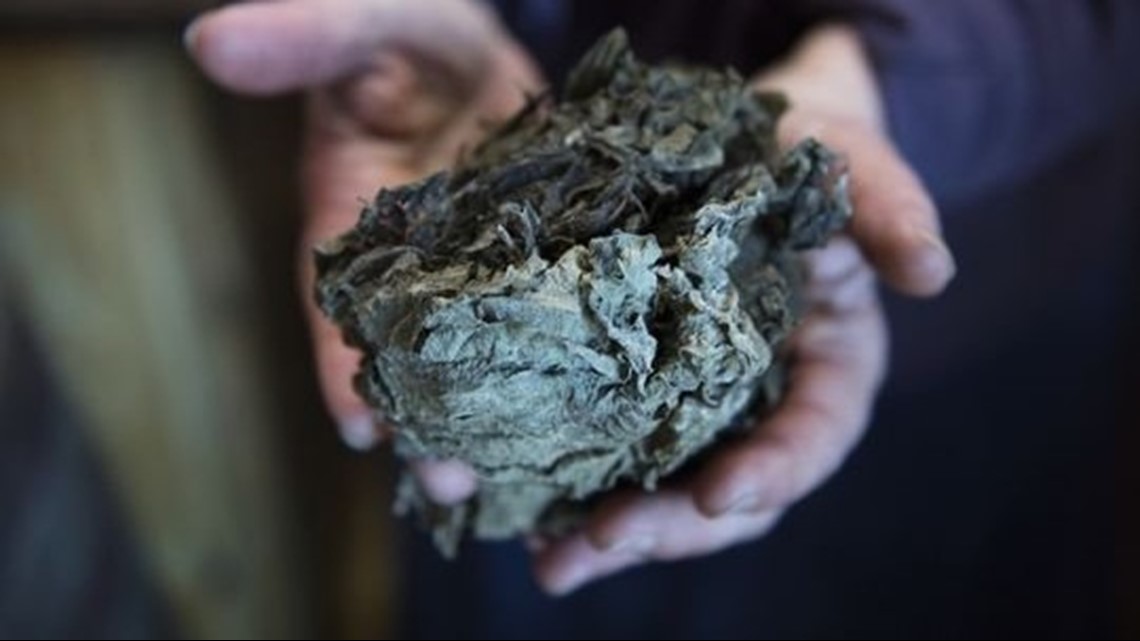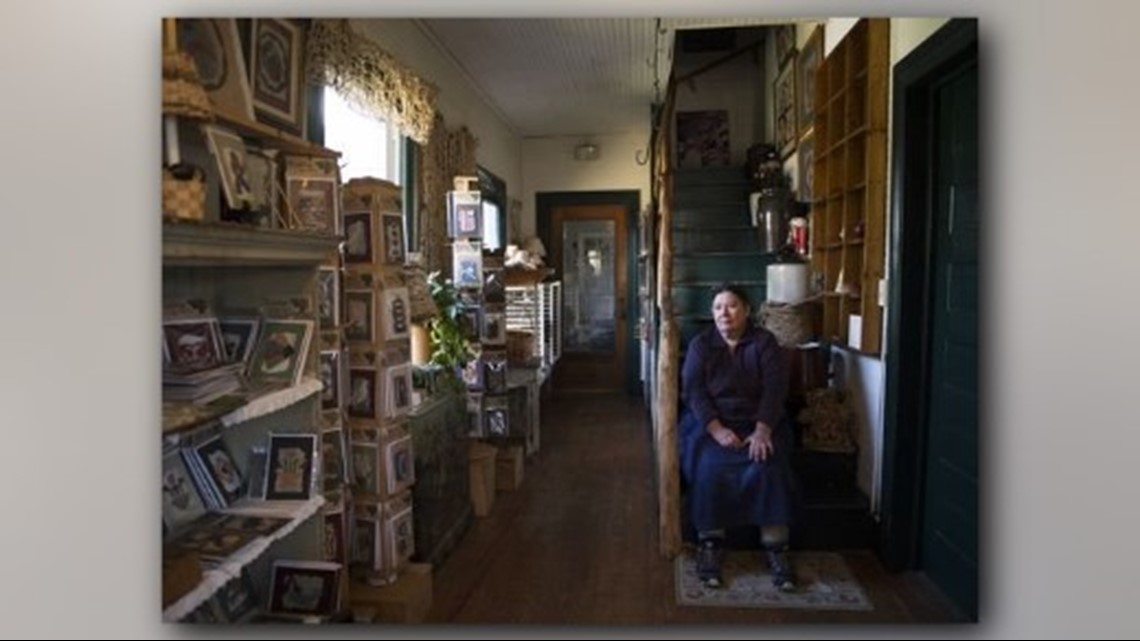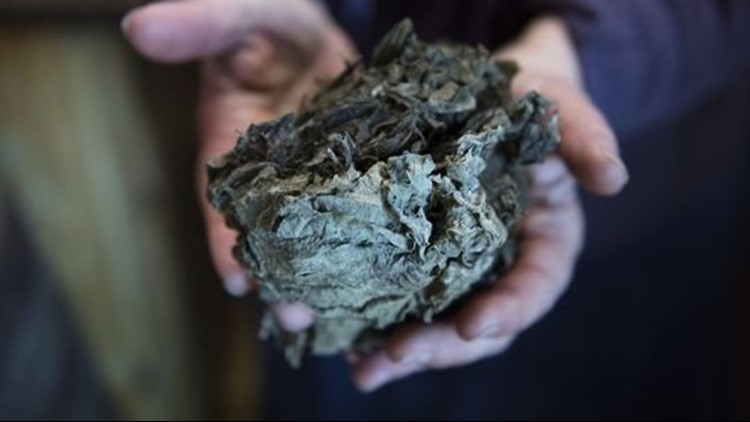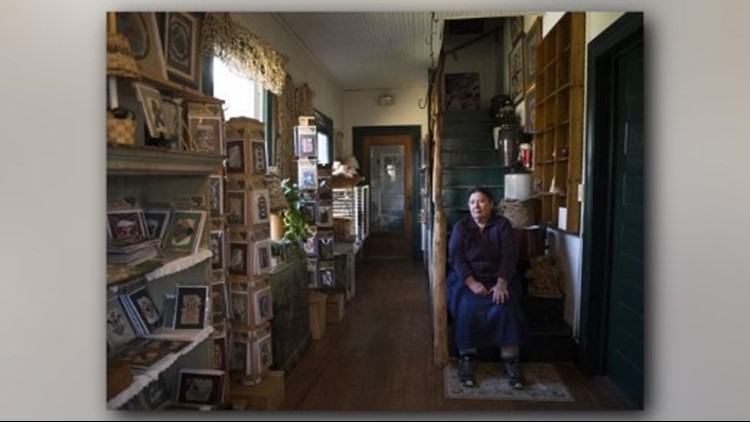Nancy Basket lives, breathes and eats kudzu.
Yes, eats.
She adds kudzu to her salads and uses kudzu blossoms for jam. She also turns the plant into paper and fiber for baskets and is about to get a loom to start making clothing from the plant fibers.
"I know people hate it," Basket said. "But it's a plant. You can do things with it. You shouldn't be afraid of it."
Kudzu, arguably the South's most hated plant, blankets southern landscapes in emerald green. It can grow a foot in a day, eventually engulfing abandoned cars, light poles and old barns.
The invasive plant, which has provided a living for Basket and her family for three decades, is a problem because it chokes out native plants and is difficult to kill.
But there is a qualified defense of kudzu, even beyond its potential as a cottage industry for people like Basket.
Worse invasive species don't get the same hatred as kudzu, said Don Hagan, assistant professor of forest ecology at Clemson University. Dangerous plants fly under the radar as kudzu swallows up all of the hatred, he said.
"Kudzu is certainly a problem," Hagan said. "We'd be better off without it, but that's not the whole story. Around here the species that are really bad are Chinese privit and silverthorn. They're moving into shaded forests and that impedes native and desirable species like oaks."
Kudzu, once peaking at 7 million acres, is down to less than a million acres, according to a 2010 U.S. Forestry Service estimate.
Invasive species like Chinese privit, silverthorn and Bradford pears spread their seeds far and wide, carried by birds, wind and on the bottom of shoes.
Japanese honeysuckle expands 65,000 acres a year and covered 10.3 million acres nearly a decade ago, according to the Forestry Service. Cogon grass, Chinese privet, English ivy, bamboo and tallow trees are all bigger problems than kudzu, according to the same study.
The very nature of kudzu, a sun-loving plant, keeps it in check relative to other invasive species, said Cory Tanner, a horticulture program leader with the Greenville County Clemson Extension Office. It doesn't grow far into forests but is very visible from roads.
"There's just something about kudzu," Hagan said. "When it does invade, it's so striking. It’ll totally cover everything in a way that’s very obvious. There is more Chinese privit but you'll see kudzu in old fields and along the road. It's the visual of a kudzu invasion that is really ingrained in people’s minds."
How'd we end up with kudzu?


Kudzu was brought to America as a decorative vine and introduced to our shores as part of a Japanese government garden at the 1876 Centennial Exhibition (World's Fair) in Philadelphia. It debuted alongside bananas, ketchup, the typewriter, the sewing machine and the first parts of the Statue of Liberty.
It remained a minor footnote until the Depression era, when it began being promoted by government officials as a solution to poor soil. It was a miracle cure.
Generations of cotton farming, along with other crops that also destroyed the soil, led to serious problems of erosion and a soil that was drained of nitrogen. Government and local leaders became kudzu boosters out of desperation.
"They told everyone, 'Here’s this plant, take this sprig of kudzu, stick it in the ground and run away because it's gonna grow so fast," Hagan said.
It was the perfect plant.
Cheap, effective and the solution to all of the Southern farmers' biggest soil problems.
Kudzu was an effective nitrogen booster, restoring soil that had been drained. Its roots and quick growth helped enormously with erosion.
"What they didn’t tell the farmers was that once you plant it, you’re stuck with it," Hagan said. "But let's not vilify grandpa for planting it. He had good reasons. But now we're stuck with it."
PHOTOS: Making the Most Out of Kudzu
Making the Most Out of Kudzu
So is kudzu really an innocent plant that's been wrongfully maligned?
"Well, I wouldn't say that at all," said Greg Lucas, a spokesman for the South Carolina Department of Natural Resources. "They're all heinous."
He said kudzu remains a problematic invasive species but he agreed with the Clemson experts that other plants are more of a growing problem.
"Privit, Japanese honey suckle, kudzu — those are some of the public enemy number ones," he said. "You're not going to eliminate them but you can keep them at bay."
What's next for kudzu?
Ad campaigns in the 1980s cemented kudzu's reputation as something that comes in and takes over.
But that's largely not true anymore.
"There’s no net increase in kudzu," Hagan said. "We’re kind of maxed out in the South."
There are ways to kill kudzu, contrary to popular belief. Goats mow it down and a Spartanburg club, The Trees Coalition, goes on regular hunting missions, using cutting blades with shorter handles to swing faster.
But it's a tricky plant to kill.
Kudzu can be killed by using herbicides, but the plant is roughly as expansive above ground as below. It may take more than a year of regular cutting or herbicides to start to kill the plant. It's very success at curbing erosion is hidden with those deep roots.
It's possible to wipe out kudzu on a private property, Lucas said, but any plant invasion of a million acres is here and won't leave.
He said public land requires permission to use pesticides and cut down plants to make sure people don't take out the wrong plants or use the wrong chemicals.
Back to Basics


Basket, who teaches school children about crafting, changed her last name decades ago to match one of her basket-weaving Native American ancestors. She says kudzu is a miracle plant.
She has a barn in her backyard that is insulated with kudzu. She said it's the only barn of its kind in the country. Her living room is a display of kudzu crafts, from tiny baskets the size of a finger nail to an 8-foot long Cherokee serpent, the uhktena.
Basket's uhktena, one of several large creations made in tribute to her Native American heritage, has elk antlers and looks like a dragon. She plans to add rows of teeth and remote control eyes that can follow visitors in her living room.
Three decades ago, she came to the South and planned to make baskets out of pine needles. But the baskets fell apart.
Basket talked to the plants and apologized. After a long time, she realized she should leave the trees alone and focus on kudzu, which was readily available.
"You can make a living with kudzu," she said. "It's not neat or tidy. Factories have shut down. Just because you don't think it's good for anything, you hate it? This is a cottage industry. Learn from me. Steal my ideas. Go further. You don't have to go on Shark Tank. Those guys are mean. You can learn to work with what's around you."
Follow Mike Ellis on Twitter @MikeEllis_AIM





